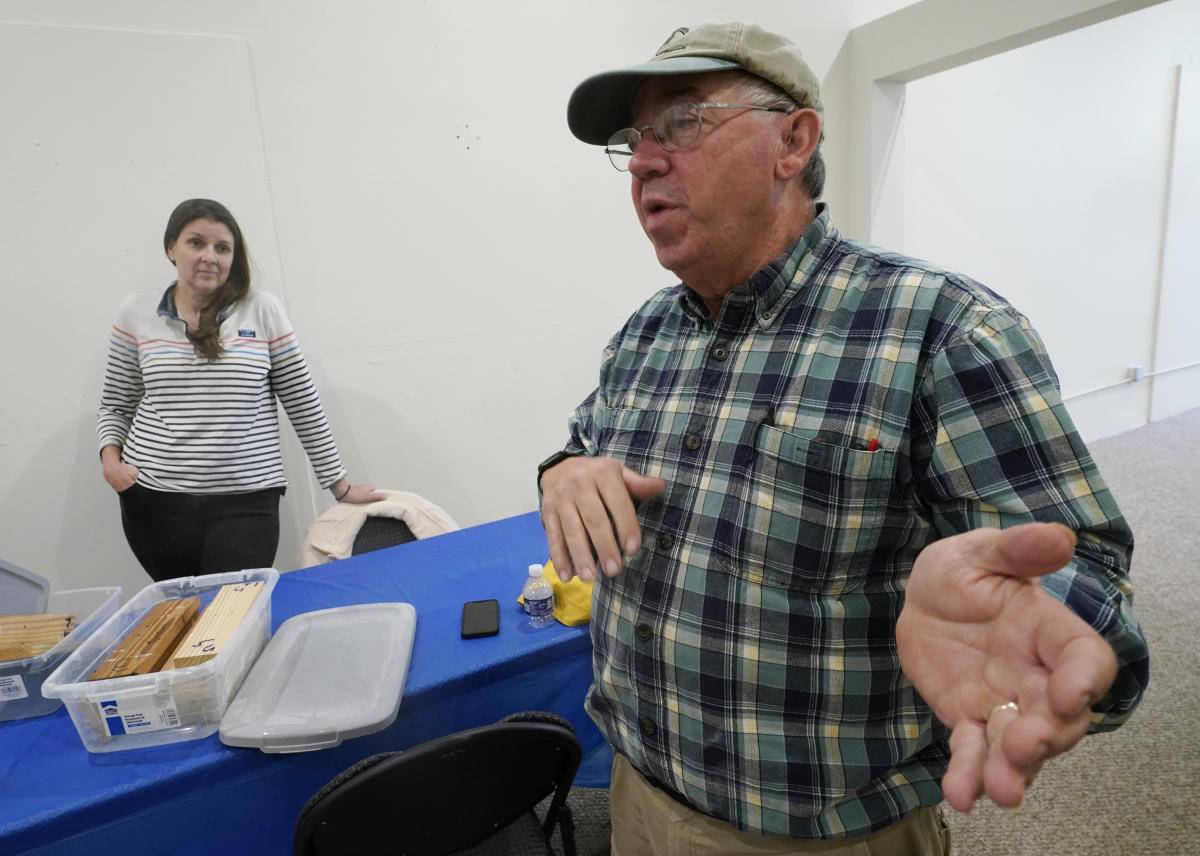
SUFFOLK, Va. (AP) — Whenever historic homes get flooded, building contractors often feel compelled by government regulations to rip out the water-logged wood flooring, tear down the old plaster walls and install new, flood-resistant materials.
It’s a hurried approach that’s likely to occur across southwest Florida in the wake of Hurricane Ian. But restorers Paige Pollard and Kerry Shackelford say they know something that science is yet to prove: historic building materials can often withstand repeated soakings. There’s often no need, they say, to put in modern products such as box-store lumber that are both costly to homeowners and dilute a house’s historic character.
“Our forefathers chose materials that were naturally rot-resistant, like black locust and red cedar and cypress,” said Shackelford, who owns a historic restoration business. “And they actually survive better than many of the products we use today.”
Pollard and Shackelford are part of an emerging movement in the U.S. that aims to prove the resilience of older homes as more fall under the threat of rising seas and intensifying storms due to climate change. They hope their research near Virginia’s coast can convince more government officials and building contractors that historic building materials often need cleaning — not replacing — after a flood.
In Florida, historic preservationists already fear older homes damaged by Ian may be stripped of original materials because so few craftsmen are available who can properly perform repairs.
“There are some companies that just roll through, and their job is just to come in and gut the place and move on,” said Jenny Wolfe, board president of the Florida Trust for Historic Preservation.
Pollard and Shackelford’s joint venture in Virginia, the retrofit design firm Building Resilient Solutions, opened a lab this year in which planks of old-growth pine, oak and cedar are submerged into a tank mimicking flood conditions. The tests are designed to demonstrate historic materials’ durability and were devised with help from Virginia Tech researchers.
Meanwhile, the National Park Service has been working with the U.S. Army Corps of Engineers on similar research at the Construction Engineering Research Laboratory in Champaign, Illinois.
Researchers there have read through construction manuals from the mid-19th and early 20th centuries to assemble everything from tongue-and-groove flooring to brick walls coated with plaster. The materials were lowered into water containing bacteria and mold to simulate tainted floodwater.
The research may seem glaringly redundant considering all of the older homes that stand intact along the nation’s coasts and rivers: many have withstood multiple floods and still boast their original floors and walls.
Pollard and Shackelford say lumber in older homes is resilient because it came from trees that grew slowly over decades, if not centuries. That means the trees’ growth rings were small and dense, thereby making it harder for water to seep in. Also, the timber was cut from the innermost part of the trunk, which produces the hardest wood.
Plaster can also be water resistant, while common plaster coatings were made from lime, a substance with antiseptic qualities.
But here’s the problem: U.S. flood insurance regulations often require structures in flood-prone areas to be repaired with products classified as flood-resistant. And many historic building materials haven’t been classified because they haven’t been tested.
U.S. regulations allow exceptions for homes on the National Register of Historic Places as well as some state and local registries. But not everyone fully understands or is aware of the exceptions, which can be limited.
The far bigger challenge is a lack of expertise among contractors and local officials, Pollard said. Interpretations of the regulations can vary, particularly in the chaos after a major flood.
“You’ve got a property owner who’s in distress,” said Pollard, who co-owns a historic preservation firm. “They’re dealing with a contractor who’s being pulled in a million directions. And the contractors are trained to get all of that (wet) material into a dumpster as quickly as possible.”
In Norfolk, Virginia, Karen Speights said a contractor replaced her original first floor — made from old-growth pine — with laminate flooring after her home flooded.
Built in the 1920s, Speights’ two-story craftsman is in Chesterfield Heights, a predominantly Black neighborhood on the National Register of Historic Places. It sits along an estuary of the Chesapeake Bay in one of the most vulnerable cities to sea-level rise.
“I still believe I had a good contractor, but flooding was not his expertise,” Speights said. “You don’t know what you don’t know.”
Along Florida’s Gulf Coast, there are thousands of historic structures, said Wolfe of the Florida Trust. A large number of them are wood-framed houses on piers with plaster-and-lath walls.
Many likely just need to be dried out after Ian, Wolfe said. But only so many local contractors know what to do “in terms of drying them slowly and opening up the baseboards to get circular airflow.”
Andy Apter, president-elect of the National Association of the Remodeling Industry, agreed that many contractors aren’t well-versed in older building materials.
“There’s no course that I know of that teaches you directly how to work on historical homes,” said Apter, a Maryland contractor. “It’s like an antique car. You’re going to be limited on where you can find parts and where you can find someone who’s qualified to work on it.”
But interest in the resilience of older homes has grown since Hurricane Katrina, which deluged hundreds of thousands of historic structures along the Gulf Coast in 2005, according to Jenifer Eggleston, the National Park Service’s chief of staff for cultural resources, partnerships and science.
Eggleston said the park service recognized the growing need to protect older structures and issued new guidelines last year for rehabilitating historic buildings in flood-prone areas.
The guidelines recommend keeping historic materials in place when possible. But they don’t list specific materials due to the lack of research on their flood resistance.
That’s where the studies come in.
A recent study by the park service and Army Corps found that some historic materials, such as old-growth heart pine and cypress flooring, performed considerably better than certain varieties of modern lumber, Eggleston said.
Those particular floor assemblies could be dried for reuse after so-called “clean water” damage, Eggleston said. But they would likely require refinishing to remove “biological activity,” such as mold and bacteria.
Pollard and Shackelford said they’re hoping for an eventual shift in practices that will save money for homeowners as well as taxpayers, who often foot the bill after a major disaster.
In the meantime, flooding in historic areas will only get worse from more frequent rain storms or more powerful hurricanes, said Chad Berginnis, executive director of the Association of State Floodplain Managers.
“Think about our historic settlement patterns in the country,” Berginnis said. “On the coasts, we settled around water. Inland, we settled around water.”




